The characters in this drama are based on a Chinese classic book called 山海经 (Classic of Mountains and Seas), written from the Warring States Period (476 BCE - 221 BCE) to the early Han Dynasty (202 BCE - 220). It’s one of the Three Mysterious Books in ancient China.
It is a comprehensive book from ancient China that covers a wide range of topics, including geography, history, mythology, astronomy, botany, medicine, religion, and other subjects. It serves as a record of various aspects of ancient social life.
Character 1: Zhu Yan 朱厌
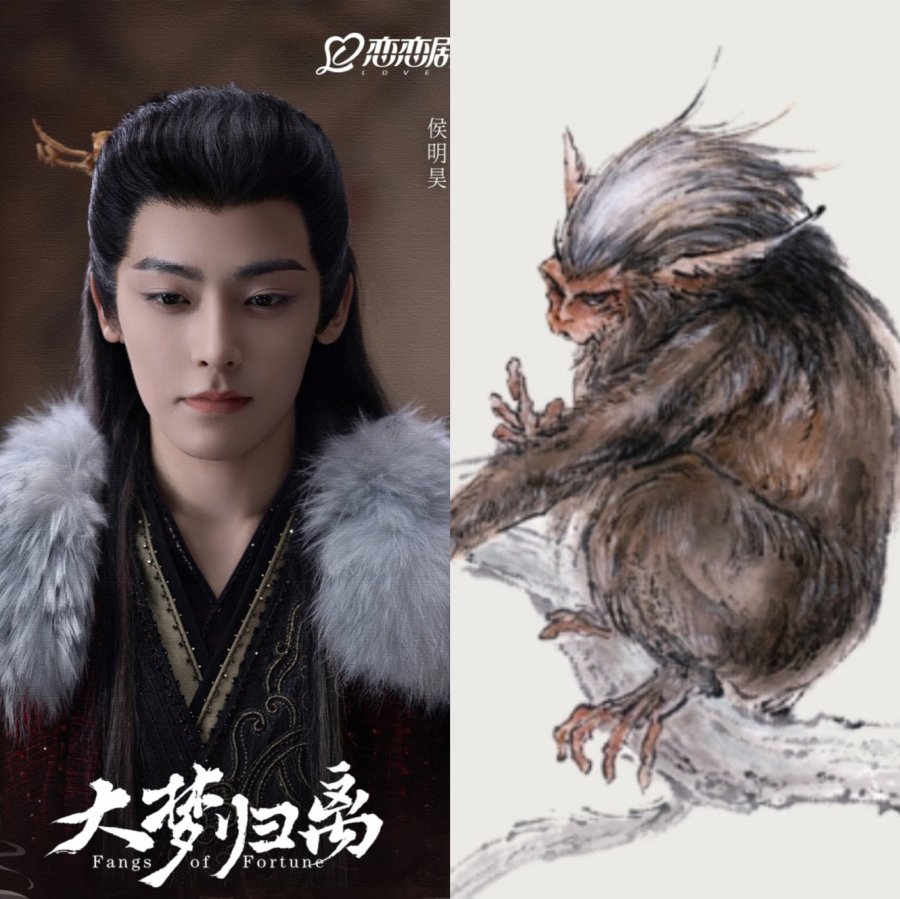 Zhu Yan 朱厌 - recorded in the book as ‘It appears like an ape, with a white head and red feet. According to legend, whenever this creature appears, it is an omen that great chaos will befall the world.’
Zhu Yan 朱厌 - recorded in the book as ‘It appears like an ape, with a white head and red feet. According to legend, whenever this creature appears, it is an omen that great chaos will befall the world.’
Zhu Yan is one of the 12 Mythical Creatures in China. Some of the rest 11 often appear in Xianxia dramas:
-Phoenix (the most popular bird in many Xianxia dramas)
-Qiong Qi (the green monster in the drama ‘Ashes of Love’),
-Bi Fang (the bird in the drama ‘Eternal Love’),
-Kun Peng (the big fish can transform into a big bird, in the drama ‘Sword and Fairy’)
-Bai Ze (the FL in this drama, an auspicious white tiger/dragon)
This mythical creature typically symbolizes omens or warnings about significant disruptions or disturbances in society. The creature's unusual features (white head, red feet) serve to emphasize its supernatural nature and the seriousness of the impending events it heralds.
Character 2: Bai Ze 白泽
 Bai Ze 白泽 - a divine creature, knows all matters concerning ghosts and gods in the world. Entrusted by the Yellow Emperor, Bai Ze drew all the ghosts and spirits he knew into pictures and added annotations, which is the origin of the ‘Bai Ze Map’.
Bai Ze 白泽 - a divine creature, knows all matters concerning ghosts and gods in the world. Entrusted by the Yellow Emperor, Bai Ze drew all the ghosts and spirits he knew into pictures and added annotations, which is the origin of the ‘Bai Ze Map’.
It is a mythical creature that embodies wisdom and knowledge, often depicted with a mix of features from other animals, symbolizing its supernatural origins and power. Its unique appearance with a tiger’s head, red hair, dragon’s body, and horns highlights its mystical nature and role as a guardian against chaos and misfortune.
According to legend, the Bai Ze can predict disasters, warning people and protecting them from evil forces. It is regarded as a guardian deity, symbolizing the power of protection and safeguarding, ensuring people's peace and happiness.
Character 3: E Shou 讹兽
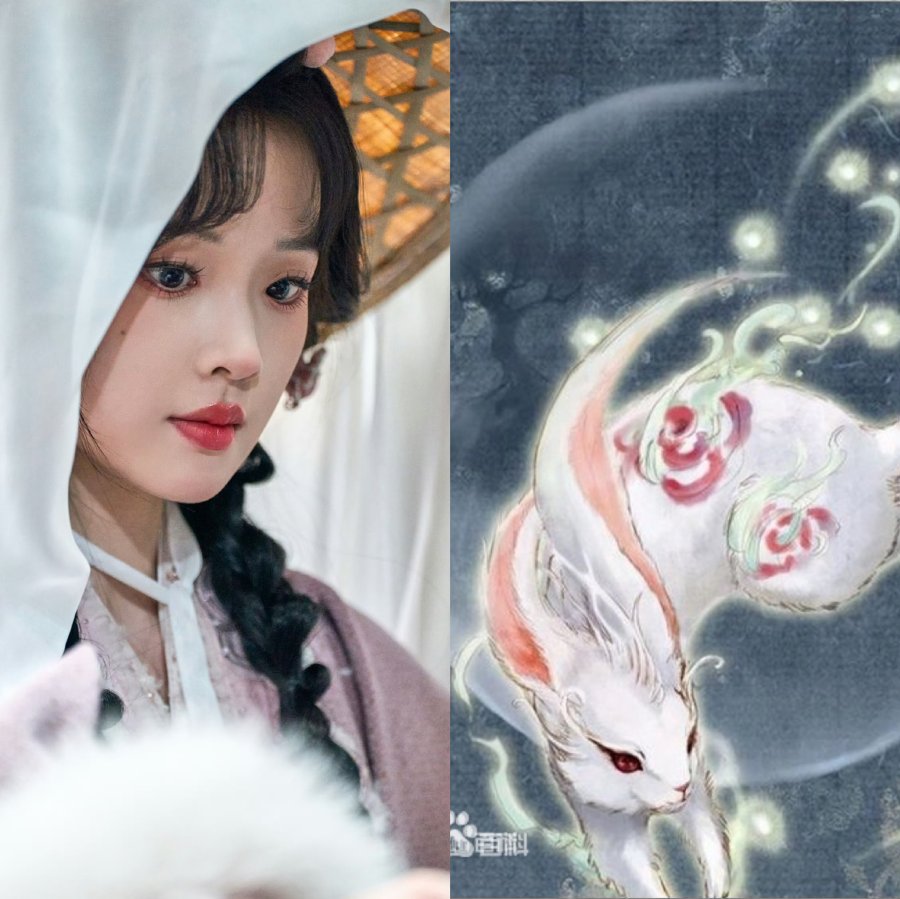 E Shou 讹兽 is a mythical creature, known for its human-like face, rabbit-like body, and elegant demeanor. It possesses a magical aura, exuding an air of charm and mystery with every movement, and is even said to be able to speak human language.
E Shou 讹兽 is a mythical creature, known for its human-like face, rabbit-like body, and elegant demeanor. It possesses a magical aura, exuding an air of charm and mystery with every movement, and is even said to be able to speak human language.
According to legend, E Shou has a talent for conversation, attracting both humans and animals who love to gather around it. However, while it speaks, its words are rarely truthful, as it enjoys deceiving others. Despite its deceptive nature, the E Beast is considered a good-natured spirit.
Interestingly, its meat is said to be delicious, but anyone who eats it supposedly loses the ability to speak the truth as well.
Character 4: Cheng Huang 乘黄
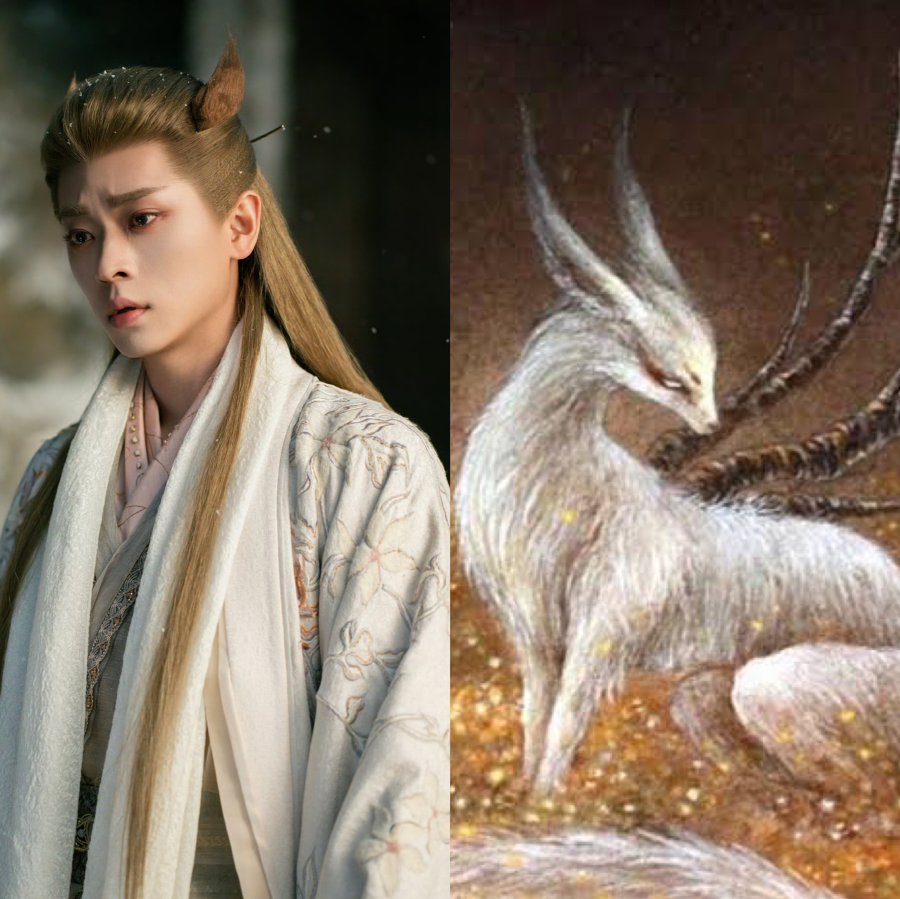 Cheng Huang 乘黄, also known as Fei Huang, is a mythical divine horse in ancient legends. It is said that on the ancient land, there was a creature called Chenghuang, which resembles a fox, has a horn on its back, and has yellow fur. Those who ride it gain an extended lifespan of 2,000 years. The Yellow Emperor once rode it.
Cheng Huang 乘黄, also known as Fei Huang, is a mythical divine horse in ancient legends. It is said that on the ancient land, there was a creature called Chenghuang, which resembles a fox, has a horn on its back, and has yellow fur. Those who ride it gain an extended lifespan of 2,000 years. The Yellow Emperor once rode it.
There is a Chinese idiom originates from it, called ‘飞黄腾达’ (Fei Huang Teng Da). It’s used to describe someone who swiftly rises to prominence, enjoys good fortune in their career, or experiences rapid success in their endeavors. It’s also a common wish in Chinese blessing culture.
Character 5: Qing Geng 青耕
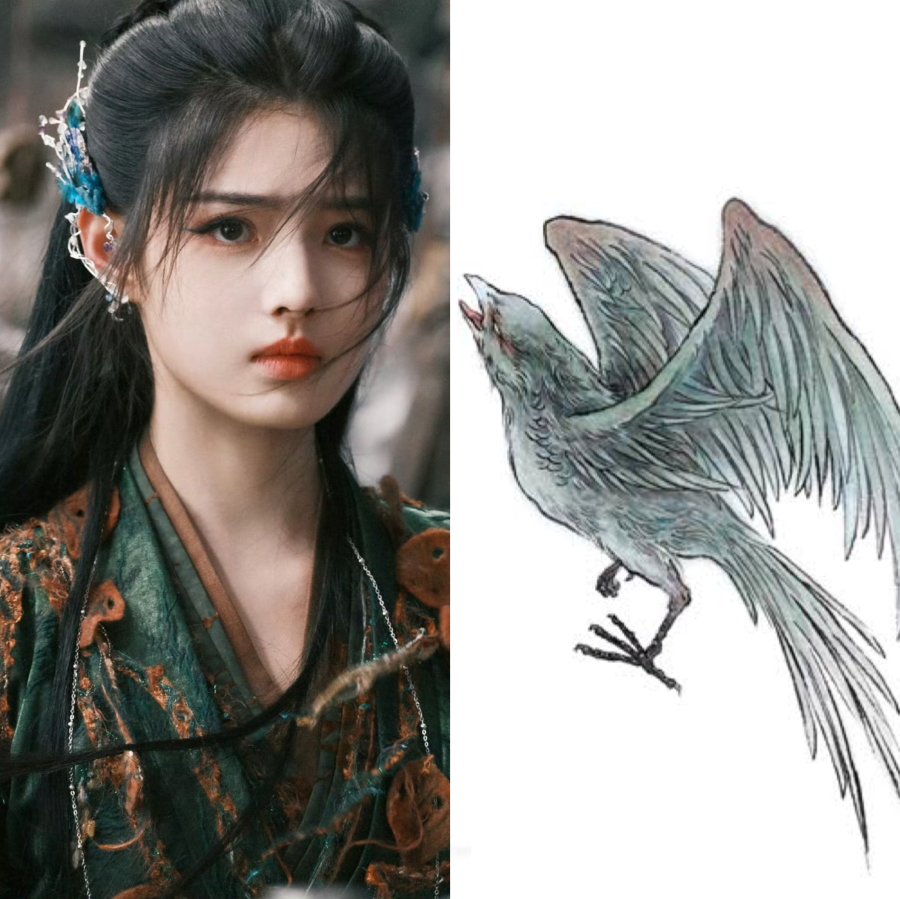 Qing Geng is a mythical bird, living on Jinli Mountain and resembles a magpie, with a blue body, white beak, white eyes, and a white tail. It’s said to have the ability to ward off plagues.
Qing Geng is a mythical bird, living on Jinli Mountain and resembles a magpie, with a blue body, white beak, white eyes, and a white tail. It’s said to have the ability to ward off plagues.
Legend has it that when Qing Geng appears, no plague exists in the world. Although Qing Geng's appearance is quite ordinary among birds, its extraordinary power lies in its ability to ward off epidemics—an ability considered miraculous in ancient times when medical and health conditions were lacking.
Over time, the myth of the Qing Geng bird warding off plagues evolved into the belief and myth of the "Auspicious Magpie Bringing Good News." This transformation occurred partly because Qinggeng’s physical form resembled that of a magpie, and partly due to the auspicious symbolism conveyed by the myth of the bird successfully warding off epidemics and restoring peace to the human world.
Character 6: Fei 蜚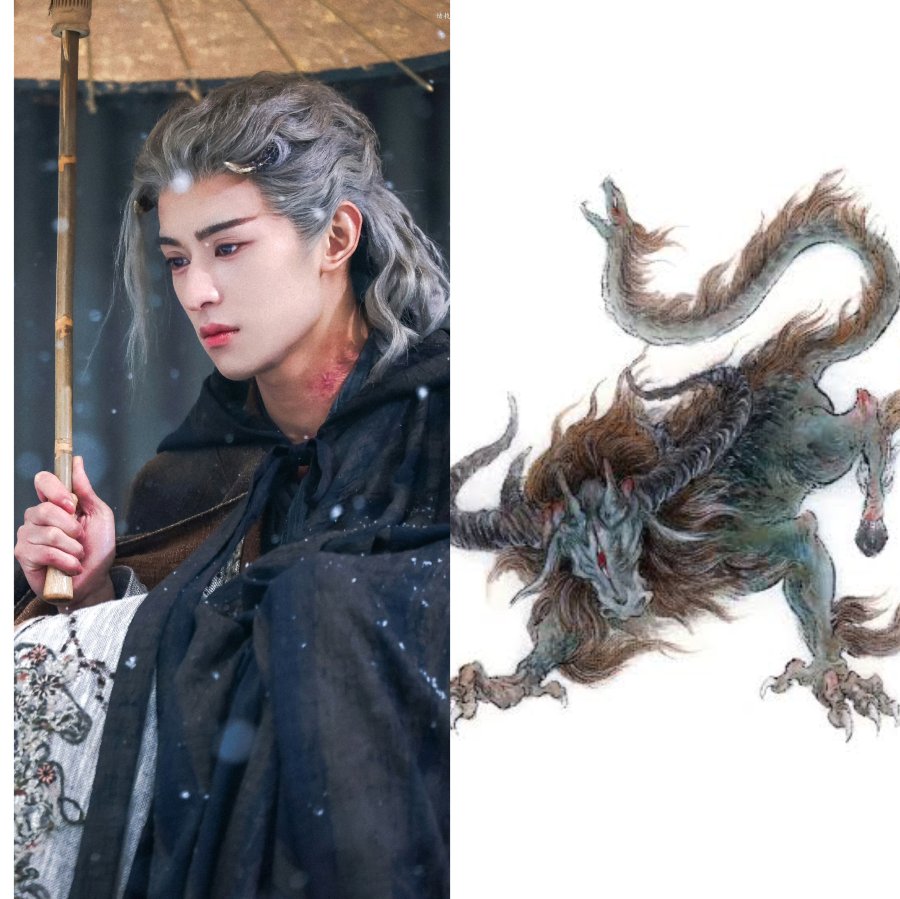
According to the Classic of Mountains and Seas, Fei resides in Tai Shan, located in the eastern part of the Central Plains. It has the appearance of an ox with a white head but possesses a snake's tail and only one eye.
When Fei enters water, the water source immediately dries up; when it moves into the grass, the grass withers instantly. Whenever Fei passes by, the once beautiful land is transformed into a living hell filled with plague and death, making this creature greatly feared by people.
A Chinese idiom 流言蜚语 is originated from it. It now refers to slanderous or malicious gossip spread behind someone's back.
Character 7:Bing Yi 冰夷

Bing Yi, also known as He Bo, Feng Yi, or Wu Yi, is the river deity of the Yellow River in ancient Chinese mythology and is sometimes regarded as a general term for river gods.
Bing Yi often travels from the Abyss of Extremes, riding on two dragons. He is depicted as a handsome and graceful young man. He is frequently portrayed with the body of a human and the tail of a fish, symbolizing his role as the god of aquatic beings and the ruler of the Yellow River. His hair is typically silver-white, while his eyes and scales shimmer with a lustrous, glass-like brilliance, making him extraordinarily attractive.
As the deity of the Yellow River, He Bo is primarily responsible for overseeing the river and its tributaries, ensuring smooth water flow and river channel stability. In ancient times, the Yellow River frequently flooded, causing severe disasters for the people along its banks. As the god of water management, He Bo not only controlled the floods of the Yellow River but also safeguarded the livelihood and safety of the people living nearby.
Character 8: Zhu Long 烛龙

Zhu Long, also known as Zhu Yin or Zhu Jiu Yin, is the mountain deity of Zhong Mountain in ancient Chinese mythology and is described as a dragon without legs. He is considered the first dragon in Chinese myth. Zhulong’s eyes control day and night; when he opens them, it is day, and when he closes them, it is night.
He possesses supernatural powers to summon wind and rain, and he can illuminate dark places, which is why he is known as Zhu Long (Candle Dragon). When he exhales, it brings summer, and when he inhales, it brings winter. His body stretches a thousand li (roughly 500 kilometers) in length.
The myth of Zhu Long is a result of early cultural beliefs and tribal evolution. By the Ming Dynasty, Zhulong’s status rose significantly, and he became a symbol of the sun, as he was originally believed to carry the essence of fire in his mouth, bringing light to dark and shadowy realms. Since then, Zhu Long has become an object of worship, and during the Ming and Qing dynasties, he even held a position in royal sacrifices.
Character 9: :Li Lun 离仑

Li Lun,recorded as Ghost Huai Li Lun, who can command fierce, malevolent birds, such as hawks, eagles, and falcons. In the drama, Li Lun’s character is similar to the myth, he parasitizes other living beings and controls everything, including possessing the ability to manipulate dreams. His true form is an ancient shadow-loving locust tree, which uses its leaves to attach its spirit to other beings, thus taking control of their actions.
Character 10: Bai Jiu 白玖(帝女桑Princess Sang’s son)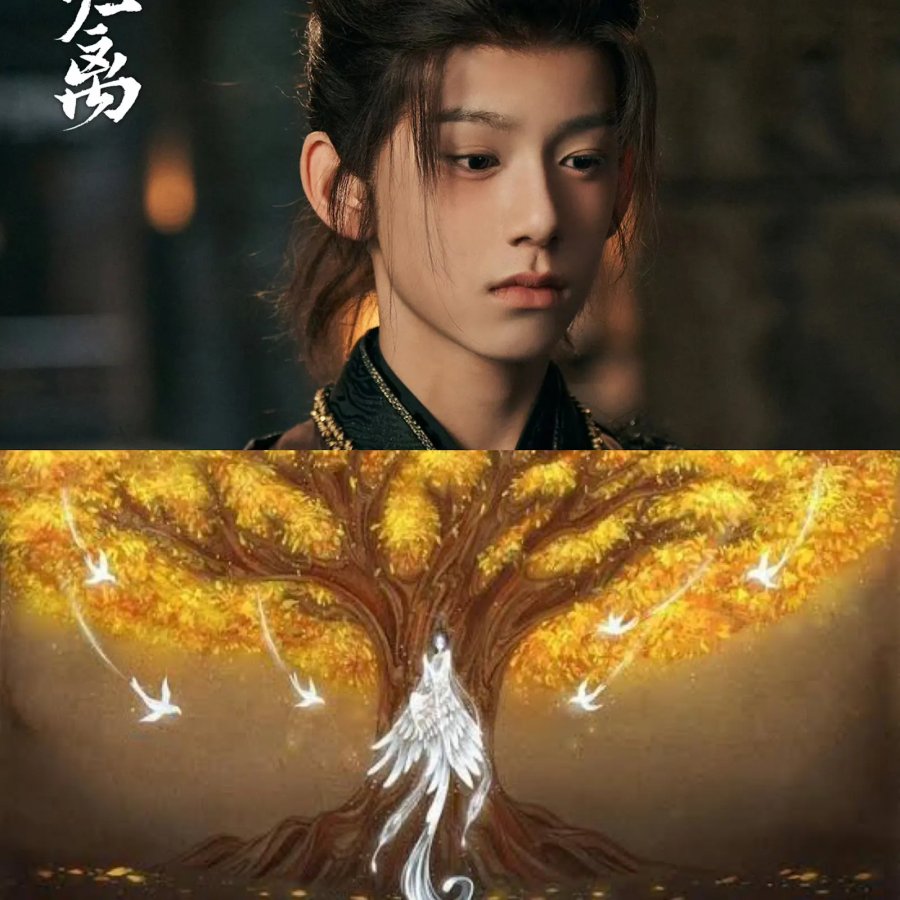
Princess Sang(Heavenly Emperor's Second Daughter) is a mulberry tree in Chinese mythology. It is named so because the Second Princess resided in this tree and ascended to the heavens.
The second daughter of Yan Di (the Flame Emperor) studied under the immortal Chisongzi and eventually achieved immortality, transforming into a white magpie that built its nest in the mulberry tree on E Mountain in the southern seas. Yan Di, saddened by his beloved daughter’s transformation, called for her to come down from the tree, but she refused. Yan Di then set the tree on fire to force her down, but instead, the emperor’s daughter ascended to the heavens, consumed by the flames. The tree was subsequently named "Di Nü Sang (Princess Sang)" in her honor.
In ancient mythology, the Tree Sang, or Fu Sang (扶桑) is depicted as the place where the sun rises, symbolizing hope and renewal. During the Han and Tang dynasties, the Fu Sang tree was considered a massive tree with flowers bloomed alongside the leaves. It was often used as a symbol of sunrise and hope. Additionally, Fu Sang also appeared as the name of a country, referring to a land located east of China, which later came to be associated with Japan.
To be continued...
This makes me appreciate the attention to details of this drama even more.
One thing I really love about Fangs of Fortune is the looks of the characters (and the demons in particular), from their outfits to the wigs and make-up, and now knowing all the research and study behind each and every one of those costumes just leaves me in complete awe with the stylist department.
meiwatchesdramas:
This makes me appreciate the attention to details of this drama even more.
One thing I really love about Fangs of Fortune is the looks of the characters (and the demons in particular), from their outfits to the wigs and make-up, and now knowing all the research and study behind each and every one of those costumes just leaves me in complete awe with the stylist department.
Yeah, I noticed the style design is based on the creatures' appearance. Kudos to the stylist team!
dtt:
Thank you so much for this post! It's so helpful to understand the story even better, and appreciate all the effort put into the writing.
I'm really curious what other creatures will appear later on and make the job for our little team even harder...
You are welcome! I'm glad you like it! I will update this post in my free time with upcoming characters :D
Recent Discussions
-
Which Was the Last Drama Episode You Watched? Part 353 seconds ago - Meechum2011
-
What was your Funniest Scene?5 minutes ago - Lucky
-
The original work - Go ahead (cdrama) vs this one9 minutes ago - danny_ang
-
Taboo or dark romance with palatable chemistry?12 minutes ago - angeliviki2022
-
Who is Kunwu? Process of elimination13 minutes ago - PeachBlossomGoddess
-
Xiang Liu and Xiao Yao’s Story and Romance43 minutes ago - liddi
-
What's the Last Anime Episode You Watched? #245 minutes ago - ravenchaser
-
What was the last anime you completed?46 minutes ago - ravenchaser
Hottest Discussions
-
Preference game20 hours ago
-
Yeah, no, guess4 hours ago
-
10 dramas/movies with ____? #43 hours ago
-
♥️Count to 7000000♥️3 hours ago
-
***Count to 100,000***2 hours ago
-
Word Association #41 hour ago




